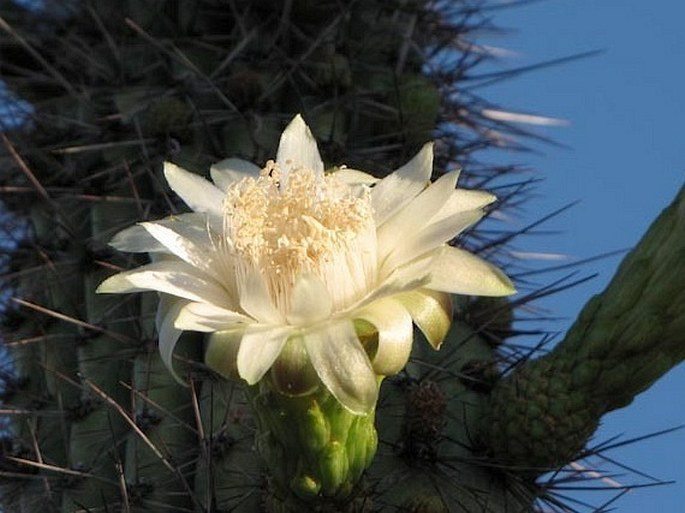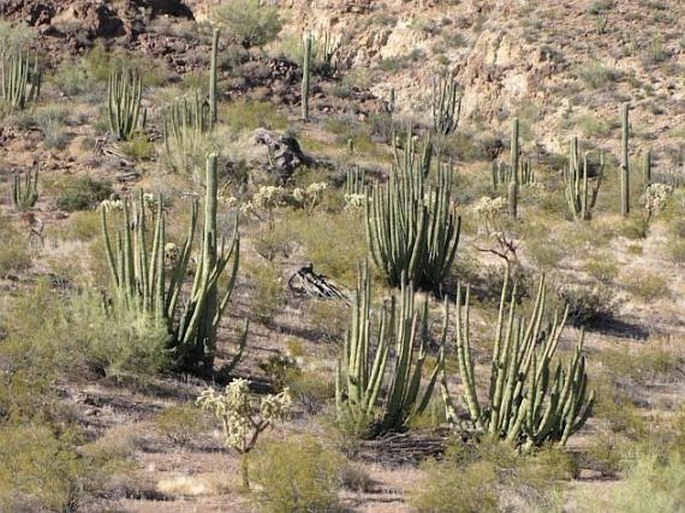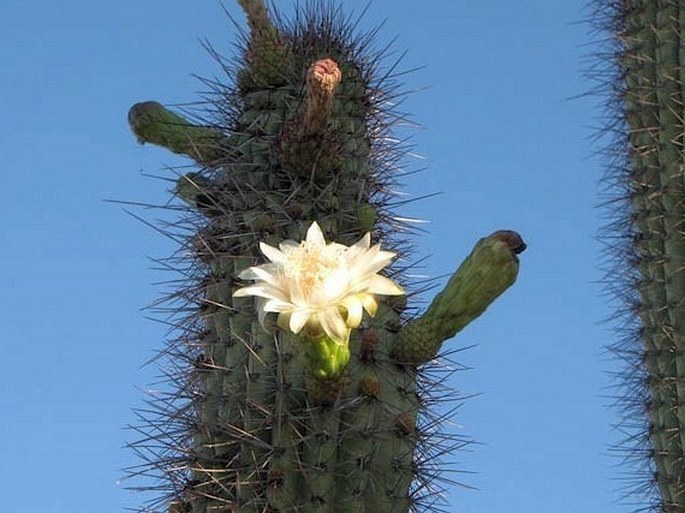Syn.: Cereus thurberi Engelm., Glandulicereus thurberi (Engelm.) Guiggi, Lemaireocereus thurberi (Engelm.) Britton et Rose, Marshallocereus thurberi (Engelm.) Backeb., Neolemaireocereus thurberi (Engelm.) Backeb., Pilocereus thurberi (Engelm.) Rümpler, Rathbunia thurberi (Engelm.) P. V. Heath
Family: Cactaceae Juss.

Distribution: Species of northern Mexico, reaching a small area in southwest US (mainly in Organ Pipe Cactus National Monument). It occurs in states of Baja Norte, Baja Sur, Sinaloa, Sonora and Arizona; strictly in floristic Sonora province.
Ecology: Grows in Sonora desert, in elevations from 20 to 1100 m. Blooms from March to July, exceptionally until December.

Description: Very robust cactus of cylindrical habit, 3–6(–12) m tall, 15–20 cm in diameter, branching from base. Stem erect, as young yellowish green, later green, smooth, non-reflective surface, (12–)15–19 ribs. Areoles along ribs, 4–10 mm, 10–15 cm apart, reddish brown; spines 11–14(–19), thin, straight, lateral 1–3.5 cm long, central to 6 cm long. Flowers borne near top of stem, opening at night (pollinated by moths and bats), flower tube 60–75 mm long including ovary, up to 75 mm across, outer perianth segments wide, reddish with greenish recurving tips, gradually passing into ovoid scales on the tube; inner perianth segments whitish to pinkish, erect; stamens white, numerous, erect. Fruit is a berry, globular, 4–7.5 cm, red, spiny, later naked, edible; seeds black, shiny, 2 mm.
Threat and protection: This species is protected by CITES agreement, as all species in the family Cactaceae.
Note: Genus Stenocereus includes some 20 species, occurring in southern Arizona, Mexico and Caribbean and coastal regions of Central America and north of South America.


These images were taken in USA, Arizona, Organ Pipe Cactus National Monument (May 2009).


